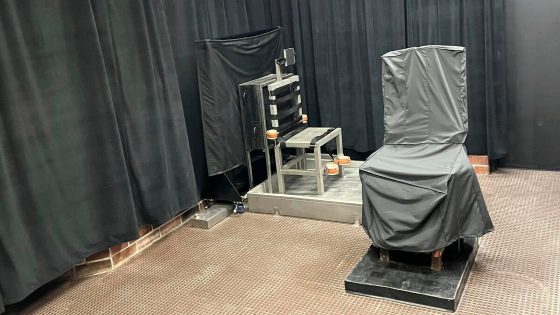Brad Sigmon, a 67-year-old inmate in South Carolina, has made the harrowing decision to die by firing squad on March 7, becoming the first U.S. inmate to face execution by this method in over a decade. This marks a significant moment in the ongoing debate surrounding capital punishment, as the state adapts its approach amid challenges in securing lethal injection drugs.
- Brad Sigmon chooses firing squad execution.
- Scheduled execution date: March 7, 2025.
- First U.S. execution by firing squad since 2010.
- Sigmon convicted of 2001 double homicide.
- Attorneys argue for delay and clemency.
- South Carolina struggles with lethal injection drugs.
Sigmon, convicted for the brutal 2001 murders of his ex-girlfriend’s parents in Greenville County, had the option of lethal injection or the electric chair but opted for the firing squad, which he described as a more humane choice. His attorney, Gerald “Bo” King, articulated Sigmon’s reasoning: “He does not wish to inflict that pain on his family, the witnesses, or the execution team. But, given South Carolina’s unnecessary and unconscionable secrecy, Brad is choosing as best he can.”
The firing squad execution, a method rarely used since the 1976 reinstatement of the death penalty in the U.S., is a stark contrast to lethal injections, which have faced significant scrutiny due to complications and perceived inhumanity in recent cases. King noted the troubling experiences of three men executed in South Carolina since September, who appeared to suffer prolonged deaths while strapped to gurneys during their lethal injections.
Sigmon’s criminal history paints a grim picture. He was convicted of beating his ex-girlfriend’s parents to death and attempting to kidnap her in a shocking display of violence that has haunted the families involved for years. In a chilling confession, Sigmon remarked, “I couldn’t have her, I wasn’t going to let anybody else have her.” This crime not only resulted in his conviction but also initiated a series of legal battles over his treatment and the contentious methods of his execution.
With the state facing difficulty sourcing lethal injection drugs—due to suppliers unwilling to provide them under public scrutiny—the South Carolina Legislature approved the use of firing squads as an alternative in 2022. This decision sparked a wider conversation about the ethics and efficacy of capital punishment in the modern age. Only three inmates have been executed by firing squad in the U.S. since 1976, all in Utah, with the last one occurring in 2010. The rarity of this method raises concerns and questions about its implications as it becomes reintroduced in South Carolina.
Legal avenues for Sigmon’s appeal have been narrow. He requested a delay to investigate whether proper procedures were followed in the recent execution of another inmate, Marion Bowman, whose autopsy report remains a focal point of contention. It raises issues about how executions are conducted and the transparency of the processes involved. Sigmon’s defense team has emphasized the mental health struggles he has experienced, arguing that his trial lawyers failed to adequately represent his case.
As the execution date looms, Sigmon’s team has urged Governor Henry McMaster to consider clemency, pointing out that Sigmon has been a model inmate who has shown remorse and sought to atone for his actions. Yet, historically, no governor in South Carolina has granted clemency since the death penalty was reinstated, indicating the uphill battle they face.
The firing squad execution setup itself signifies a dramatic shift in how the state approaches executions. The chamber is equipped with bulletproof glass for witnesses, a basin to catch blood, and a configuration that ensures the shooters remain concealed from the view of witnesses. This design highlights the gravity of the situation and the various layers of protocol involved in capital punishment.
As the deadline approaches, the discourse surrounding Sigmon’s fate continues to unfold, with implications extending far beyond his personal circumstances. This case not only reflects on the individual but also on societal attitudes toward justice, punishment, and rehabilitation. The world watches as South Carolina prepares to carry out an act that will likely reignite debates over capital punishment in America, a topic fraught with emotion, ethics, and varying perspectives.

































